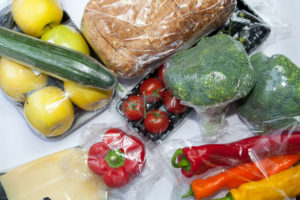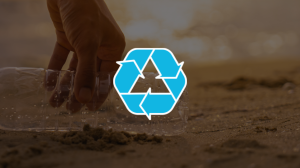Satellite trackers help map journey of plastic waste to the ocean
Ocean plastic, as we know, is ubiquitous — but where do these items come from and how do they get there?
A research team from the University of Exeter in the U.K. is trying to answer these questions by launching electronically tagged reclaimed litter into rivers. By using plastic bottles equipped with satellite tags, the team hopes to see how plastics move through rivers and eventually accumulate in the open ocean.
This new study, which is published in the science journal PLOS ONE and is part of a National Geographic expedition aimed at unearthing solutions to plastic pollution, describes how researchers mapped the journey of 25 plastic bottles along India’s Ganges River into the Bay of Bengal. The bottles were fitted with a cheap, light-weight tracker that kept the bottles buoyant to mimic actual conditions.
This retrofitted litter can be deployed in waterways to track the movement of plastics into the open ocean. To give a sense of how far some of these items travel, one of the bottles launched into the Bay of Bengal made its way to a whirlpool in the Indian Ocean, covering 2,845 kilometres over 94 days.
“Everyone can relate to a plastic bottle in their life,” said lead study author and postdoctoral researcher Emily Duncan. “Being able to track where that’s going would be really important to build people’s awareness of how far their litter can move […] and will inform science-based policy.”
The tagged bottles pinpoint where plastic litter is likely to accumulate, and the role that rivers play in pushing these items out into the ocean. Duncan said the dream is to design a near-weightless tracker they can attach to even the lightest ocean litter, like a chip bag, without weighing it down. For now, the priority is launching more trackers and working on a solar-powered version that will keep the trackers going for longer.
Plastic pollution is a problem in Canada’s rivers and lakes as well. We throw out over 3 million tonnes of plastic each year, and while it’s hard to quantify how much plastic ends up in Canada’s waterways, nearly 10,000 tonnes alone makes its way into the Great Lakes, which connect to the Atlantic Ocean via the St. Lawrence Seaway.
Plastic pollution “doesn’t really decompose,” said Banu Örmeci, director of Carleton University’s Global Water Institute. “It’s there for hundreds of years and breaks down into smaller and smaller pieces that present a higher risk to aquatic ecosystems and potentially human health.”
To combat Canada’s plastic problem, the government recently announced $500,000 in funding for the prevention, capture and removal of plastic pollution.
Science knows relatively little about the impacts of plastic pollution on freshwater systems like rivers compared to oceans. Örmeci is one of three recipients of the federal grant, and her team is working with Canadian companies to develop technologies that monitor and remove microplastics from wastewater.
“It’s a question of how we’re going to control plastic pollution, and really, the only way to do that is to control the source,” Örmeci said. She said that ultimately, we need to find ways to “eliminate the unnecessary use of plastics.”



